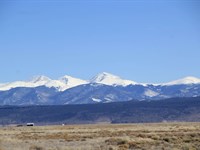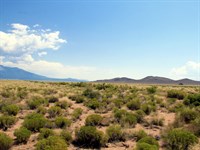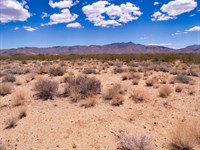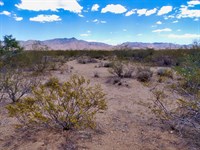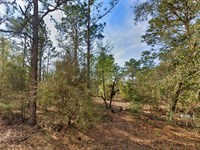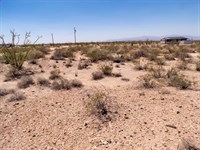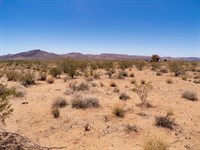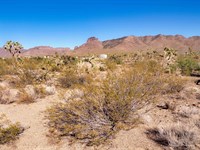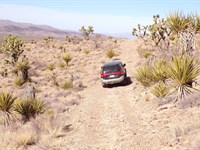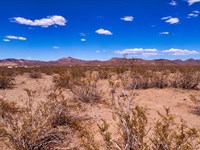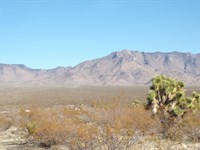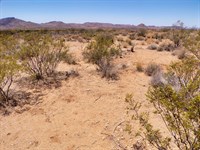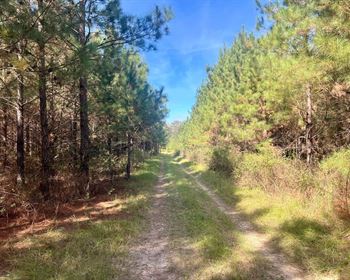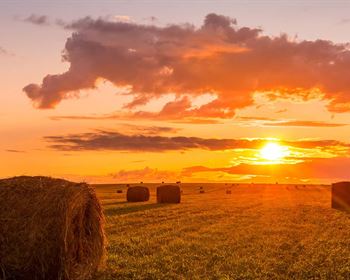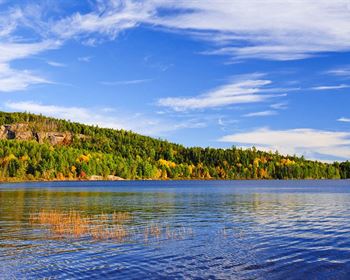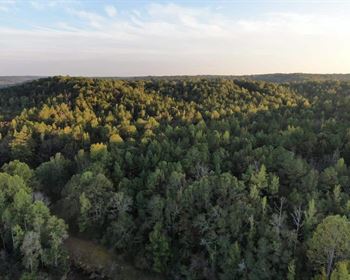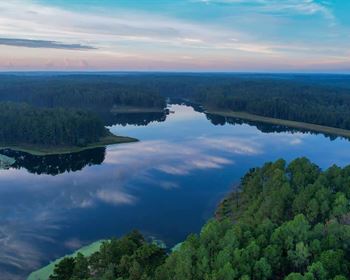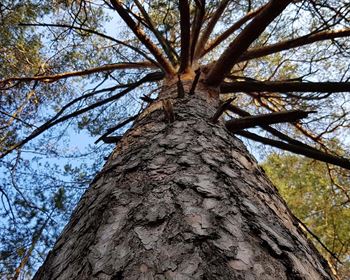2.35 Acre Arizona Desert Kingdom
Carrow Rd : Yucca, AZ 86438
Mohave County, Arizona
Land Description
Where Colorado River Adventures Meet Off-Grid Freedom
Where World-Class Water Recreation Meets Off-Grid Freedom in Mohave County's Hidden Paradise
This is your moment. The moment when everything changes. When you stop scrolling through endless listings and start living your Arizona dream. When you finally say "Yes" to owning your piece of the legendary American Southwest at a price that won't destroy your financial freedom.
This isn't just land. This is your gateway to the Colorado River lifestyle - 2.35 acres of pure Arizona freedom in Mohave County's recreational paradise, where world-class water adventures are just 63 miles away and your nearest neighbor is the endless desert sky that has inspired dreamers, adventurers, and pioneers for centuries.
Welcome to your desert legacy at 34.89047, -114.02912.
Property Snapshot: Your Desert Sanctuary Awaits
Your Arizona Paradise by the Numbers
Size: 2.35 acres of pristine Mojave Desert landscape
Location: Mohave County, Arizona (Gps: 34.89047, -114.02912)
Apn: 245-02-021
Elevation: Approximately 2,400 feet - perfect high desert climate
Zoning: Agricultural Residential - maximum flexibility for your vision
Annual Taxes: Just $22.96/Year - less than a monthly streaming subscription
Access: Carrow Road - established dirt road adventure begins here
Flood Zone: None - build with complete confidence
HOA/POA: None - your land, your rules, your absolute freedom
Mineral Rights: Included with property ownership
Development Status: Raw land ready for your dreams
Location Benefits: Strategic Desert Living at Its Finest
You've discovered what savvy investors and freedom seekers already know. While everyone else pays premium prices in Phoenix or fights crowds at Lake Havasu, you'll own your private desert retreat in the heart of Arizona's outdoor recreation corridor where adventure is measured in minutes, not hours.
Your Strategic Desert Position:
45 miles to Lake Havasu City (Population 57,000+) - Home of the authentic London Bridge transported stone by stone from England, world-class boating with 60 square miles of navigable waterways, trophy fishing for striped bass up to 60 pounds, water sports capital of Arizona, full medical services including Havasu Regional Medical Center, shopping centers, marine services, and over 400 restaurants
63 miles to Colorado River - America's desert lifeline offering 1,450 miles of endless water recreation, fishing for multiple species, boating through spectacular canyons, swimming in crystal-clear waters, beach camping, and scenic beauty that attracts millions annually
66 miles to Bullhead City - Colorado River resort town with nine casinos including Harrah's Laughlin, riverside dining with views, year-round entertainment, water taxis across the river, and Nevada gaming just across the water
72 miles to Needles, California - Historic Route 66 town, gateway to Mojave National Preserve, additional Colorado River access, and California adventure opportunities
90 miles to Kingman - Mohave County seat with rich mining history, Historic Route 66 attractions including the Powerhouse Museum, Walmart Supercenter, Kingman Regional Medical Center, and full urban amenities serving as the region's commercial hub
120 miles to Las Vegas - World-class entertainment capital, McCarran International Airport with global connections, professional sports teams, unlimited dining and shopping, and major metropolitan resources
The Hualapai Valley Strategic Advantage:
This hidden gem offers authentic Arizona desert living in the heart of the Hualapai Valley - a massive basin surrounded by five mountain ranges creating a natural amphitheater of stunning beauty. The valley sits at the intersection of three major climate zones, creating unique weather patterns that bring more rainfall than the lower deserts while maintaining over 300 days of sunshine annually. You get wide-open spaces measuring over 50 miles north to south, dramatic mountain views including the Hualapai, Cerbat, Black, Peacock, and Music Mountains, and the freedom to create your desert paradise without the tourist crowds or inflated prices of waterfront properties.
Infrastructure and Growth Factors:
Interstate 40 Access: Major east-west corridor just 30 miles north connecting California to the entire eastern United States
US Route 93: Future Interstate 11 corridor connecting Las Vegas to Phoenix, increasing property values along this growth pathway
Colorado River Infrastructure: Billions in federal investment for water conservation and recreation improvements
Regional Growth: Mohave County experiencing steady 2-3% annual population growth as people discover affordable desert living
Tourism Economy: Over 3 million annual visitors to Lake Havasu area creating robust local economy and services
Property Features: Desert Canvas Ready for Your Vision
This isn't just vacant land - this is 2.35 acres of pure potential waiting for your desert dreams to take root in one of Arizona's most strategic recreational locations where every sunrise brings new possibilities and every sunset paints the sky in colors that defy description.
Desert Paradise Natural Conditions:
Expansive acreage: 2.35 acres provides 102,366 square feet of space for main home, guest quarters, workshops, RV parking, desert gardens, and recreational areas
Agricultural Residential zoning: Maximum flexibility allowing residential uses, agricultural operations, home businesses, and recreational development
Level to gently rolling terrain: Natural topography provides excellent drainage and multiple building sites without expensive grading or earthwork
360-degree panoramic views: Unobstructed desert vistas featuring five mountain ranges - Hualapai Mountains to the north, Cerbat Mountains to the northeast, Black Mountains to the west, Peacock Mountains to the south, and Music Mountains to the southeast
Pristine Mojave Desert vegetation: Native Joshua trees, creosote bush, palo verde, brittlebush, and seasonal wildflowers creating authentic desert landscape requiring zero maintenance or irrigation
Multiple premium building sites: Strategic positioning options for passive solar heating, optimal mountain views, prevailing wind protection, and privacy from future neighbors
Absolute privacy guaranteed: 2.35-Acre size ensures minimum 150-Foot setbacks from property lines, creating your personal desert sanctuary
Development Ready Infrastructure Features:
Established road access via Carrow Road: Maintained dirt road providing year-round access suitable for standard vehicles during dry conditions and 4WD recommended during rare rain events
Power infrastructure nearby: Utility poles visible at developed properties to the south, with Arizona Public Service (Aps) serving the area for grid-tie connections
Exceptional solar potential: 310+ days of sunshine annually with solar irradiance averaging 6.5 kWh/m²/day - among the highest in the continental United States
Stable desert soil composition: Decomposed granite and sandy loam ideal for foundations, septic systems, and minimal site preparation
Natural drainage patterns: Gentle slopes direct rare rainfall away from building sites, preventing any flooding or erosion issues
Dark sky conditions: Bortle Scale 3-4 providing exceptional stargazing with Milky Way visible to naked eye on clear nights
Wind resources: Prevailing winds from the southwest averaging 8-12 mph ideal for supplemental wind power generation
Premium Desert Building Conditions:
Geotechnical advantages: Ancient alluvial fan deposits create stable building platform with bearing capacity exceeding residential requirements
Seismic stability: Located in Seismic Zone 1 (lowest risk) with no recorded earthquakes above 3.0 magnitude within 50 miles
Optimal orientation: Property shape allows buildings to face any direction for views, solar gain, or wind protection
Natural materials: Local rock and sand available for authentic desert construction and landscaping
Fire defensible space: Sparse desert vegetation naturally creates defensible zones around structures
Construction season: Year-round building weather with only 5-7 inches annual rainfall
Colorado River Paradise: Your Water Playground Awaits
You're not just buying desert land - you're buying access to the Southwest's most legendary river system and all the world-class recreation it provides. The Colorado River has shaped the American Southwest for millions of years, and now it's ready to shape your lifestyle.
Lake Havasu Adventures (45 miles):
Experience Arizona's water sports capital where 300 days of sunshine meet 60 square miles of navigable waterways creating perfect conditions year-round.
275 miles of stunning coastline: More shoreline than the entire California coast, featuring hidden coves, sandy beaches, and dramatic red rock formations
World-famous London Bridge: Authentic 1831 bridge purchased for $2.46 million and reconstructed stone by stone, now Arizona's second-most visited tourist attraction after Grand Canyon
Year-round boating paradise: Average water temperature 55-85°F supporting every water sport from wakeboarding to sailing, with 28 public boat launches and full-service marinas
Trophy fishing destination: Largemouth bass up to 15 pounds, striped bass exceeding 60 pounds, smallmouth bass, channel catfish, bluegill, and redear sunfish in crystal-clear waters
Waterfront dining district: Over 50 restaurants and bars with river views, from casual beach bars to fine dining establishments
Major annual events: Lake Havasu Boat Show (April), Ijsba World Finals jet ski championships (October), Desert Storm Poker Run, Havasu Balloon Festival, and numerous fishing tournaments
Water sport rentals: Jet skis, boats, kayaks, paddleboards, and parasailing available from multiple vendors
Professional guide services: Licensed fishing guides, wakeboard instructors, and scenic tour operators
Colorado River Recreation Corridor (63 miles):
The mighty Colorado River flows 1,450 miles from Rocky Mountain headwaters to the Sea of Cortez, and your section offers some of the most accessible and beautiful recreation opportunities.
Parker Strip: 16-mile stretch between Parker Dam and Headgate Dam known as Arizona's water playground with sandy beaches, waterfront camping, and calm waters perfect for all ages
Emerald Canyon: Spectacular narrow canyon below Parker Dam with emerald green waters, towering cliffs, and hidden beaches accessible only by boat
Trophy striper fishing: World-record potential striped bass with current Arizona record at 67 pounds, plus excellent catfish, largemouth bass, and panfish populations
Beach camping paradise: Dozens of beaches and coves for primitive camping, many accessible only by boat for ultimate privacy
River float trips: Lazy river tubing and kayaking through scenic canyons with bald eagle and bighorn sheep sightings common
Waterfront events: Pirate festivals, boat parades, fishing derbies, and holiday celebrations throughout the year
Buckskin Mountain State Park (Within Driving Distance):
This 1,677-Acre riverside oasis offers developed recreation facilities along an especially scenic stretch of the Colorado River.
Waterfront camping: 68 family campsites with electric/water hookups directly on the Colorado River with beach access
Boat launch facilities: Two concrete launch ramps accommodating boats of all sizes with courtesy docks and fish cleaning stations
Swimming beaches: Designated swimming areas with gentle slopes perfect for families, volleyball courts, and picnic ramadas
Interpretive trails: Self-guided nature walks explaining desert and riparian ecosystems with wildlife viewing opportunities
Cabana rentals: 21 riverside day-use cabanas with electricity, shade ramadas, and BBQ grills for gatherings
River Island access: Primitive camping on river islands accessible by boat for adventurous explorers
Basketball and volleyball courts: Lighted sports facilities for evening games
Bill Williams River National Wildlife Refuge (Accessible for Day Trips):
Where the last free-flowing river in Arizona meets the Colorado, creating 6,105 acres of pristine riparian paradise.
300+ bird species: Premier birding destination including vermillion flycatchers, yellow-billed cuckoos, southwestern willow flycatchers, and dozens of hawk and owl species
Wilderness paddling: 9-mile canoe trail through cottonwood-willow forests with beaver dams, great blue heron rookeries, and pristine backwaters
Wildlife photography: Bighorn sheep, mule deer, coyotes, bobcats, and even occasional mountain lions in their natural habitat
Fishing variety: Largemouth bass, channel catfish, flathead catfish, tilapia, and carp in diverse water habitats
Hiking trails: Multiple paths ranging from easy nature walks to challenging desert hikes with panoramic views
Seasonal variations: Spring wildflowers, summer bird nesting, fall migrations, and winter raptor concentrations
Educational programs: Ranger-led tours, junior ranger activities, and citizen science opportunities
Parker Dam and Power Plant (Day Trip Destination):
Engineering marvel creating Lake Havasu and generating clean hydroelectric power for the Southwest.
World's deepest dam: 235 feet of the 320-Foot structure sits below the riverbed - an engineering first
Self-guided tours: View massive generators, learn about hydroelectric power, and understand Colorado River management
Scenic overlooks: Spectacular views of Lake Havasu, Colorado River, and surrounding mountains
Historical significance: Built 1934-1938 as part of the Colorado River development project
Photography opportunities: Dramatic dam structure and surrounding red rock canyons
Land Use Possibilities: Your Desert Dreams Unlimited
Agricultural Residential zoning provides maximum flexibility to create your perfect desert lifestyle, from simple weekend retreat to elaborate homestead operation. This special zoning classification combines the best of residential and agricultural freedoms.
Residential Dreams Come True:
Custom desert estate: Design your architectural masterpiece with walls of glass capturing mountain views, courtyards for outdoor living, and infinity pools overlooking the desert
Southwestern adobe home: Traditional construction using local materials, thick walls for natural cooling, and authentic regional architecture
Modern manufactured home: Today's manufactured homes offer 2,000+ square feet, luxury finishes, and energy efficiency at fraction of site-built cost
Tiny home desert oasis: Minimalist living from 400-1,000 square feet with maximum connection to the desert environment
Container home innovation: Shipping container architecture perfect for desert climate with modifications for insulation and comfort
RV luxury basecamp: Build permanent RV pad with full hookups, covered ramada, outdoor kitchen, and storage buildings
Multi-generational compound: Main house plus casitas for extended family, each with privacy but shared outdoor spaces
Off-grid earthship: Self-sufficient home using recycled materials, passive solar design, and rainwater harvesting
Agricultural and Homesteading Opportunities:
Transform your desert acreage into a productive and sustainable homestead operation.
Desert-adapted agriculture: Grow dates, jojoba, agave, prickly pear cactus, and desert-adapted herbs for profit or personal use
Greenhouse operations: Climate-controlled growing for year-round vegetables, herbs, and exotic plants with potential farmer's market sales
Livestock suitable for desert: Raise Boer goats, Dorper sheep, heritage chickens, or rabbits adapted to arid climates
Beekeeping enterprise: Desert wildflowers and mesquite produce unique, high-value honey with health benefits
Medicinal plant cultivation: Grow aloe vera, desert lavender, chaparral, and other healing plants for natural remedies
Permaculture food forest: Design water-harvesting swales, plant guilds, and micro-climates for sustainable food production
Aquaponics systems: Combine fish farming with vegetable production in water-efficient closed-loop systems
Worm farming: Vermiculture operations producing valuable compost and fishing bait with minimal water use
Recreational and Adventure Development:
Private off-road park: Design trails, obstacles, and camping areas for personal use or commercial operation
Astronomy retreat: Build observatory or rent telescope pads to stargazers seeking dark sky experiences
Desert camping resort: Develop unique glamping sites, tent platforms, or RV resort for adventure tourists
Shooting sports range: With proper berms and safety measures, create private shooting range for practice or instruction
Paintball or airsoft field: Design tactical courses using natural terrain for competitive sports
Rock climbing wall: Construct artificial climbing structures for training and recreation
Motorcycle trials course: Natural terrain perfect for developing technical riding skills
Business and Investment Opportunities:
Equipment storage facility: Store boats, RVs, and toys for Lake Havasu visitors needing secure storage
Desert event venue: Host weddings, corporate retreats, music festivals with stunning natural backdrop
Film location services: Rent to production companies seeking authentic desert settings
Solar farm development: Lease portions for commercial solar with excellent grid access nearby
Eco-tourism operations: Guided desert hikes, wildlife tours, photography workshops, survival training
Wellness retreat center: Yoga, meditation, and healing arts in peaceful desert setting
Adventure guide services: Base for Colorado River tours, desert exploration, and outdoor education
Artists' workspace: Studios, galleries, and workshops for creative professionals seeking inspiration
Conservation and Sustainability Projects:
Wildlife habitat enhancement: Create water features and native plant gardens supporting local species
Carbon credit potential: Desert vegetation and soil carbon sequestration for environmental markets
Research partnerships: Collaborate with universities studying desert ecology and climate adaptation
Demonstration site: Showcase sustainable desert living techniques for education and consulting
Seed collection business: Harvest and sell native plant seeds for restoration projects
Renewable energy showcase: Demonstrate latest solar, wind, and battery technologies
Community and Lifestyle: Authentic Arizona Desert Living
The Hualapai Valley Difference:
Experience true Arizona desert living where wide-open spaces measuring over 50 miles create a sense of infinite possibility, stunning sunsets paint the five surrounding mountain ranges in impossible shades of purple and gold, and star-filled nights reveal the universe in ways city dwellers can only imagine. This area maintains the authentic character of the Old West where self-reliance is valued, neighbors respect boundaries but help in times of need, and the desert's rhythms shape daily life.
Desert Community Character:
Population density: Less than 2 people per square mile ensuring ultimate privacy and elbow room
Genuine neighbors: Desert dwellers who chose freedom over conformity, creating a community of independent spirits
Low crime rates: Rural safety where people still leave doors unlocked and help strangers in need
Self-reliant culture: Residents pride themselves on solving problems and creating their own opportunities
Minimal regulations: County government that respects property rights and individual freedom
Dark sky community: Neighbors value pristine night skies, using responsible lighting practices
Cultural Diversity and Heritage:
Native American influence: Hualapai and Mojave tribal members maintaining traditional connections to the land
Pioneer descendants: Families who've ranched and mined these lands for generations
Modern homesteaders: New residents bringing sustainable living practices and innovative ideas
Retirement haven: Active seniors enjoying affordable desert living with nearby recreation
Digital nomads: Remote workers choosing desert beauty over urban congestion
International community: Desert lovers from around the world creating diverse neighborhood
Modern Conveniences Within Reach:
The perfect balance of rural freedom and urban access makes this location ideal for those wanting the best of both worlds.
Lake Havasu City (45 minutes):
Shopping centers: Walmart Supercenter, Home Depot, Lowe's, Safeway, Albertsons, and dozens of specialty stores
Medical facilities: Havasu Regional Medical Center with emergency room, cancer center, cardiac care, and medical specialists
Dining variety: Over 400 restaurants from fast food to fine dining, including waterfront establishments
Marine services: Multiple marinas, boat dealers, repair facilities, and marine supply stores
Educational facilities: Lake Havasu High School, Mohave Community College, and Arizona State University campus
Entertainment: Movie theaters, bowling, golf courses, and vibrant nightlife scene
Kingman (90 minutes):
Historic Route 66: Longest remaining stretch of the Mother Road with museums, diners, and attractions
Regional shopping: Walmart, Target, major grocery chains, and historic downtown boutiques
Medical services: Kingman Regional Medical Center with comprehensive healthcare
Transportation hub: Kingman Airport, Greyhound station, and major highway intersections
Cultural attractions: Mohave Museum of History, Route 66 Museum, and historic locomotive park
Las Vegas (2 hours):
McCarran International Airport: Direct flights worldwide and major airline hub
World-class healthcare: Renowned medical centers and specialists
Entertainment capital: Shows, concerts, sporting events, and attractions
Shopping paradise: From outlet malls to luxury boutiques
Business services: Everything needed for modern commerce
Local Services and Amenities:
Utilities: Arizona Public Service (Aps) for electricity, propane delivery services throughout valley
Communications: Multiple cellular carriers with good coverage, satellite internet including Starlink
Mail service: Usps delivery to roadside mailboxes, Ups/Fedex to designated drop points
Emergency services: Fire, medical, and sheriff response coordinated through county dispatch
Local contractors: Well drillers, septic installers, builders familiar with desert construction
Supply delivery: Building materials, water, and supplies delivered directly to property
Climate and Terrain: Four-Season Desert Paradise
Welcome to Arizona's ideal high desert climate - where winter visitors become permanent residents and every day feels like vacation. At 2,400 feet elevation, you enjoy the perfect balance of warm desert days and cool starlit nights.
Four-Season High Desert Climate Perfection:
Winter Paradise (December-February):
Temperature range: Highs 60-70°F, lows 35-45°F creating perfect outdoor weather
Sunshine: 85% sunny days even in winter months
Rainfall: Light winter rains 2-3 inches total bringing desert wildflowers in spring
Activities: Ideal hiking, camping, and exploration weather without summer heat
Heating needs: Minimal with passive solar design, wood stove for cool nights
Snowbird season: When northern visitors flock to Arizona's warmth
Spring Spectacular (March-May):
Temperature range: Highs 75-90°F, lows 45-60°F with gradually warming trend
Wildflower season: Desert blooms in yellow, purple, and red carpeting the valley
Perfect building weather: Ideal conditions for construction projects
Wildlife activity: Animals raising young, maximum bird diversity
Outdoor living: Begin full outdoor lifestyle with perfect temperatures
Garden planting: Start heat-loving crops and desert-adapted plants
Summer Intensity (June-August):
Temperature range: Highs 95-110°F, lows 65-75°F with dry heat more tolerable than humid climates
Monsoon season: Dramatic afternoon thunderstorms July-August bringing 2-3 inches rain
Early morning magic: Sunrise temperatures in 70s perfect for outdoor work
Pool season: Afternoon dips in pool or Lake Havasu for cooling
Indoor comfort: Modern homes with proper design stay naturally cool
Star gazing: Clear nights after monsoon storms provide exceptional viewing
Autumn Bliss (September-November):
Temperature range: Highs 75-95°F, lows 45-65°F with comfortable cooling trend
Second wildflower bloom: After monsoon rains, another flowering cycle
Perfect camping: Ideal temperatures for outdoor sleeping and activities
Holiday season: Thanksgiving outdoors, Christmas with sunshine
Construction window: Another ideal period for building projects
Tourist season: Visitors return for perfect weather conditions
Annual Climate Statistics:
Sunshine: 310+ days annually - more than San Diego or Miami
Rainfall: 5-7 inches total mostly in winter and monsoon seasons
Humidity: Average 20-30% creating comfortable dry heat
Wind: Prevailing southwest 8-12 mph providing natural cooling
Frost days: Only 10-20 annually, typically December-February
Growing season: 240+ days for desert-adapted plants
Extreme Weather Rarity:
Tornadoes: Essentially unknown in this region
Hurricanes: Too far inland to experience tropical storms
Blizzards: No snow at this elevation
Flooding: Excellent drainage prevents any issues
Earthquakes: Minimal seismic activity in stable geological zone
Building-Perfect Terrain Analysis:
Your 2.35 acres offers ideal topography for development with minimal site preparation costs.
Gentle gradient: 2-5% slopes providing natural drainage without erosion concerns
Stable soil composition: Decomposed granite mixed with sandy loam ideal for foundations
Natural building pads: Multiple level areas suitable for structures without major grading
View orientations: Sites available facing all directions for optimal solar gain or mountain views
Privacy buffers: Natural terrain features creating separation from future neighbors
Access routes: Multiple options for driveway placement minimizing cut and fill
Drainage patterns: Sheet flow prevents concentration of rare rainfall
Wind protection: Terrain variations providing natural windbreaks for building sites
Geological Advantages:
Alluvial fan location: Ancient deposits creating stable, well-draining building platform
Bedrock depth: Sufficient soil depth for standard foundations and septic systems
Mineral composition: Non-expansive soils preventing foundation problems
Bearing capacity: Exceeds requirements for residential construction
Excavation ease: No solid rock requiring blasting or special equipment
Natural aggregates: Sand and gravel available on-site for construction use
Wildlife Spectacular: Your Daily Desert Entertainment
Living here means sharing the high desert with an incredible array of wildlife, from majestic golden eagles soaring on thermals to elusive desert bighorn sheep navigating impossible terrain. Your property sits at the intersection of multiple habitat zones, creating exceptional diversity.
Large Mammals - Desert Icons:
Desert Mule Deer:
These majestic animals are daily visitors, especially during morning and evening feeding times. Bucks grow impressive antlers spanning 24-30 inches, shed annually in late winter. Family groups of does and fawns commonly browse native vegetation, teaching young essential survival skills. During November rut, witness spectacular sparring matches as bucks compete for breeding rights.
Javelinas (Collared Peccary):
These fascinating pig-like creatures travel in family groups called squadrons, typically 6-12 animals. Despite poor eyesight compensated by excellent hearing and smell, they're surprisingly quick and agile. Watch for dust baths, social grooming, and protective behavior around young. Their presence indicates healthy desert ecosystem.
Desert Bighorn Sheep:
Occasionally visible on distant ridges with binoculars, these sure-footed climbers represent wilderness at its finest. Rams carry massive curled horns weighing up to 30 pounds, used in spectacular head-butting contests during fall rut. Ewes and lambs display incredible agility on near-vertical cliffs.
Predators - Nature's Balance:
Mountain Lions:
While rarely seen, these apex predators leave signs of their presence - tracks, scrapes, and deer caches. Adult males patrol territories up to 300 square miles, while females with cubs maintain smaller ranges. Their presence indicates healthy prey populations and balanced ecosystem.
Coyotes:
Highly adaptable and intelligent, coyotes provide nightly serenades with their yips, howls, and barks. Family groups work together hunting rabbits and rodents, teaching pups essential skills. Their role in controlling rodent populations benefits the entire ecosystem.
Bobcats:
These secretive felines hunt rabbits, birds, and rodents with incredible stealth. Spotted coats provide perfect camouflage among rocks and vegetation. Most active during dawn and dusk, patient observers might glimpse these beautiful predators.
Kit Foxes:
Smallest North American foxes with oversized ears for heat dissipation and acute hearing. Their playful antics around den sites provide endless entertainment. Underground burrows have multiple entrances and chambers for raising pups.
Raptors - Desert Air Force:
Golden Eagles:
Magnificent birds with 7-foot wingspans soar on thermals, scanning for prey with eyesight eight times sharper than humans. Nesting pairs return to same territories annually, adding to massive stick nests on cliff faces. Capable of 200 mph dives when hunting.
Red-tailed Hawks:
Most common desert raptors, their distinctive "keeeer" cry echoes across the valley. Mated pairs perform spectacular aerial courtship displays, locking talons and cartwheeling through sky. Excellent rodent control for property owners.
Harris's Hawks:
Unique among raptors for hunting cooperatively in groups, like aerial wolf packs. Family groups work together to flush and capture prey, sharing meals communally. Their social nature makes them fascinating to observe.
Great Horned Owls:
Powerful nocturnal hunters with distinctive "hoo-hoo" calls. Nearly silent flight allows them to catch prey unaware. Early nesters, often using abandoned hawk nests, with owlets visible by March.
Prairie Falcons:
Speed demons of the desert, diving at prey exceeding 100 mph. Nest on cliff ledges, fiercely defending territory during breeding season. Their aerial acrobatics during courtship rival any air show.
Turkey Vultures:
Nature's cleanup crew, these massive birds with 6-foot wingspans soar effortlessly on thermals. Despite their appearance, they perform essential ecosystem services and display surprising intelligence and social behaviors.
Desert Birds - Feathered Jewels:
Greater Roadrunners:
State bird of New Mexico reaching speeds of 20 mph on foot. These ground cuckoos hunt lizards, snakes, and insects with remarkable agility. Their distinctive "coo-coo-coo" calls and comical appearance make them desert favorites.
Gambel's Quail:
Coveys of these plump birds with distinctive head plumes scurry through desert vegetation. Males stand sentinel while families feed, calling sharp warnings when threats approach. Spring brings adorable chicks following parents in single file.
Cactus Wrens:
Arizona's state bird builds football-shaped nests in cholla cacti for protection. Their harsh, chattering song resonates across the desert. Bold and curious, they often investigate human activity.
Gila Woodpeckers:
Master carpenters excavating nest holes in saguaro cacti and trees. Their abandoned homes provide crucial shelter for many other species. Distinctive black and white barring with red caps on males.
Vermillion Flycatchers:
Males display brilliant red plumage during breeding season, performing aerial acrobatics to attract females. These small birds pack tremendous personality, fearlessly defending territories from much larger birds.
Costa's Hummingbirds:
Desert-adapted hummingbirds with males showing iridescent purple crowns and throats. They enter torpor on cool nights, lowering body temperature to conserve energy. Vital pollinators for desert flowers.
Reptiles and Amphibians - Cold-Blooded Wonders:
Desert Tortoises:
Protected species representing millions of years of evolution. These living fossils can live 80-100 years, storing water in their bladders for drought survival. Watching them graze on wildflowers connects you to deep desert time.
Gila Monsters:
North America's only venomous lizard, beautifully patterned in black and orange/pink. These slow-moving lizards spend 90% of time underground, emerging to feed on eggs and small prey. Shy and non-aggressive unless handled.
Chuckwallas:
Large, pot-bellied lizards that inflate their bodies to wedge into rock crevices for protection. Herbivorous, feeding on flowers, leaves, and fruit. Males display bright colors during breeding season.
Desert Iguanas:
Pale-colored lizards perfectly adapted to extreme heat, active when other reptiles seek shelter. Their ability to run on hind legs (bipedally) at high speeds amazes observers. Important seed dispersers for desert plants.
Collared Lizards:
Brilliantly colored with distinctive black collars, these lizards also run bipedally when pursuing prey or escaping predators. Males perform push-up displays and head-bobbing to establish territories.
Rattlesnakes (Multiple Species):
Western diamondbacks, Mojave rattlesnakes, and sidewinders all inhabit the area. These important predators control rodent populations while displaying fascinating behaviors. Their distinctive rattles provide clear warnings to avoid conflict.
Nocturnal Wildlife Symphony:
As darkness falls, your desert comes alive with a different cast of characters. Great horned owls hoot from saguaros, while elf owls - world's smallest - whistle from their holes. Nighthawks boom overhead catching insects, and poorwills call their name repeatedly. Kangaroo rats emerge to feed, hopping on powerful hind legs. Ringtails, Arizona's state mammal, hunt with cat-like agility. Pack rats busily collect treasures for their elaborate middens. This nocturnal activity provides endless fascination for those who take time to observe and listen.
Historical Context: Standing Where Ancient Peoples and Pioneers Walked
Your property sits in the heart of the American Southwest's most storied landscape, where every horizon holds layers of human history spanning over 13,000 years. From ancient hunters following mammoths to modern adventurers seeking freedom, this land has always called to those with independent spirits.
Ancient Indigenous Heritage (13,000 BCE - 1850 Ce):
Paleo-Indian Period (13,000-8,000 Bce):
The first humans entered this region following Pleistocene megafauna - mammoths, giant ground sloths, and ancient bison. Archaeological evidence includes Clovis points and ancient hearths found throughout the Hualapai Valley. These nomadic hunters established the first human relationship with this dramatic landscape.
Archaic Period (8,000 BCE - 200 Ce):
As climate warmed and megafauna disappeared, ancient peoples adapted to desert resources. They developed sophisticated knowledge of seasonal plants, created grinding stones for processing seeds, and established regular camping sites near reliable water sources. Rock shelters throughout the region contain evidence of their presence.
Ancestral Puebloan Influence Ce):
Though centered further east, Ancestral Puebloan traders passed through this area, leaving pottery shards and trade goods. Their routes connected the Colorado River to major cultural centers at Chaco Canyon and Mesa Verde, making this region part of a vast prehistoric economy.
Patayan Culture Ce):
The primary archaeological culture of the lower Colorado River region, these peoples developed pottery, practiced floodplain agriculture, and created extensive trail networks. Their descendants include modern Mojave, Quechan, and other Colorado River tribes.
Hualapai Nation - People of the Tall Pines:
Your land sits within the traditional territory of the Hualapai people, who have called this region home for over 1,000 years. Their name derives from "Hwa:l" (pine tree) and "Bay" (people), referring to the ponderosa pines of their mountain homeland.
Traditional territory: Originally 7 million acres from the Colorado River to the Bill Williams Mountains
Seasonal rounds: Winter camps in warm valleys, summer residence in cooler mountains
Plant knowledge: Used over 200 native plants for food, medicine, tools, and ceremonies
Hunting grounds: Your area provided rabbit, deer, and bighorn sheep for sustenance
Trade networks: Connected Pacific Coast shells to Pueblo turquoise through established routes
Sacred sites: Springs, mountains, and distinctive rock formations held spiritual significance
Pine nut harvests: Annual gathering brought bands together for trade and ceremonies
Spanish Colonial Period (1540-1821):
Coronado Expedition (1540):
Francisco Vásquez de Coronado's search for the Seven Cities of Gold brought first European contact. Though the main expedition passed to the east, scouts explored westward, making initial contact with indigenous peoples and forever changing the region.
Missionary Efforts (1600S-1700S):
Spanish missionaries attempted to establish missions along the Colorado River, introducing horses, cattle, and European diseases. Their efforts largely failed due to indigenous resistance and harsh conditions, but they left lasting impacts on native populations.
Spanish Trade Routes:
The Old Spanish Trail's western branches passed near your property, connecting Santa Fe to California missions. Pack trains of mules carried wool, blankets, and goods, returning with horses and California products. These routes followed ancient indigenous paths.
Mexican Period (1821-1848):
Following Mexican independence, land grants and ranching expanded into the region. Vaqueros pushed herds into new grazing areas, establishing the ranching culture that persists today. Mexican traders continued using established routes, now free from Spanish colonial restrictions.
American Pioneer Era (1848-1900):
Treaty of Guadalupe Hidalgo (1848):
This treaty ended the Mexican-American War, transferring your area to the United States. The sudden change in sovereignty brought new laws, new settlers, and new conflicts with indigenous peoples who hadn't been consulted.
Gold Rush Impact (1849-1860S):
California Gold Rush travelers passed through seeking shorter routes to gold fields. Some stayed, recognizing the region's own mineral potential. Prospectors found gold, silver, and copper throughout nearby mountains, establishing mining camps.
Beale's Camel Corps (1857):
Edward F. Beale's experimental U.S. Army Camel Corps passed through the region, testing camels for desert transportation. This bizarre chapter of Western history proved camels' superiority to horses and mules in desert conditions, though the Civil War ended the experiment.
Mining Boom (1860S-1940S):
Mohave County Mining Legacy:
1,100+ documented claims: Gold, silver, copper, lead, and zinc discoveries throughout the region
$50+ million production: Adjusted for inflation, billions in today's dollars extracted
Chloride founded (1862): Arizona's oldest continuously inhabited mining town
Mineral Park (1870S): Once county seat, now ghost town after producing millions in minerals
Oatman's gold boom (1900S): Two million ounces of gold, creating Arizona's largest gold rush
Mining technology: From simple arrastra grinding wheels to massive stamp mills
Mining Life and Culture:
Miners lived hard lives in remote camps, creating unique frontier communities. Saloons, brothels, and gambling halls served entertainment needs. Chinese workers brought specialized skills and faced discrimination. Mining camp justice was swift and sometimes brutal. Women ran boarding houses, restaurants, and other businesses, finding independence rare in Victorian society.
Transportation Revolution:
Atlantic & Pacific Railroad (1882):
The railroad reached Kingman, transforming regional economics. Mining ore could now be shipped profitably, cattle reached Eastern markets, and settlers arrived in unprecedented numbers. Your property's value increased as transportation infrastructure developed.
Route 66 - The Mother Road (1926-1985):
Though passing north of your property, Route 66 brought millions of Americans through Mohave County. Motels, restaurants, and attractions developed along the highway, creating the modern tourism industry that makes Lake Havasu and the Colorado River accessible today.
Colorado River Development:
Parker Dam Construction (1934-1938):
Creating Lake Havasu, this engineering marvel stands as the world's deepest dam with 235 feet below riverbed. The project provided Depression-era jobs and established the recreational paradise you'll enjoy today.
London Bridge Purchase (1968):
Chainsaw manufacturer Robert McCulloch's audacious purchase of London Bridge for $2.46 million created Lake Havasu City. The bridge's reconstruction stone by stone generated worldwide publicity, transforming a planned community into a major destination.
Modern Era - Your Chapter Begins:
Today, you're joining a continuum of dreamers and pioneers who've seen potential in this dramatic landscape. From ancient hunters to Spanish explorers, from gold miners to modern retirees, people have always been drawn to this land's promise of freedom, opportunity, and natural beauty. Your 2.35 acres connects you to this rich heritage while writing your own chapter in the continuing story of the American Southwest.
Investment Potential: Smart Money Moves to the Desert
Arizona Land Investment Mega-Trends:
The convergence of multiple powerful trends makes this the optimal time to secure Arizona desert land. Understanding these forces helps you recognize why acting now positions you ahead of the crowd.
Population Growth Dynamics:
Arizona growth rate: Adding 100,000+ residents annually, making it America's fastest-growing state by percentage
Mohave County expansion: 2-3% annual growth as people discover affordable land with recreational access
Climate migration: Millions fleeing winter weather, creating sustained demand for desert properties
California exodus: High taxes and costs driving residents to seek Arizona's freedom and affordability
Remote work revolution: Technology enables living anywhere, making rural land suddenly practical
Water Recreation Premium Analysis:
Properties with Colorado River access command significant premiums that continue widening:
Waterfront lots: $500,000-$2,000,000 for direct river access
Marina view properties: $200,000-$500,000 for water views
Near-water land (like yours): Currently undervalued but appreciating as waterfront becomes unaffordable
Recreation access value: Properties within one hour of major water recreation see 10-15% annual appreciation
Scarcity factor: No new lakes being created, making existing water access increasingly valuable
Infrastructure Investment Catalysts:
Interstate 11 development: Planned Phoenix-Las Vegas corridor will pass through Mohave County, dramatically increasing property values along route
Colorado River infrastructure: Federal billions for conservation and recreation improvements
Renewable energy projects: Major solar and wind installations bringing jobs and development
Rural broadband expansion: Starlink and 5G making remote work universally possible
Water pipeline potential: Proposed projects could bring Colorado River water to previously dry areas
Comparative Market Analysis:
Phoenix Metro Comparison:
Average home price: $450,000+ and rising rapidly
Average lot size: 0.15 acres with HOA restrictions
Annual property tax: $3,000-5,000 plus HOA fees
Your advantage: 2.35 acres for fraction of Phoenix lot price
Lake Havasu Comparison:
In-town lots: $50,000-150,000 for 0.25 acres with Hoa
Desert lots near town: $25,000-75,000 for 1 acre
Your advantage: More land, more privacy, same recreation access
Investment Timeline Projections:
Year 1-2 (Immediate Establishment):
Secure property at today's prices before next growth wave
Install basic improvements (access road, cleared building site)
Begin recreational use while planning development
Establish presence in growing community
Year 3-5 (Development Phase):
Population growth drives increased demand
Infrastructure improvements increase accessibility
Add utilities as needed for your plans
Property values typically increase 25-35% in this period
Year 5-10 (Maturation):
Full development potential realized
Surrounding properties develop, improving area amenities
Recreation economy expansion benefits all properties
Conservative projection: 50-75% total appreciation
Year 10+ (Legacy Building):
Established community with full services
Your early investment pays massive dividends
Option to sell, develop, or pass to heirs
Similar properties from 10 years ago have seen 200-300% appreciation
The Smart Money is Moving Here. Colorado River access, perfect climate, recreational paradise, and no HOA restrictions at a price that makes sense. Over 100 properties sold this year because people recognize true value.
Limited Availability Warning: Desert acreage near the Colorado River at this price point disappears fast. This exact combination of size, location, zoning, and access won't last long.
Take Action Now
Call or Text Simpli Acres Today
Every day you wait is another day without your desert paradise. In five years, you'll either be watching Arizona sunsets from Your porch... or wishing you had acted today.
Remember: Agricultural Residential zoning, 2.35 acres, Colorado River access, Lake Havasu proximity, perfect climate, and seller financing with no credit checks. This is the opportunity you've been waiting for.
Your desert adventure starts with one phone call. Make it now.
P.S. We've already sold 100+ properties this year. Don't let someone else claim Your 2.35-Acre paradise. Call right now and secure your Colorado River area desert retreat.
Land Maps & Attachments
Directions to Land
Yucca Arizona 86438, USA
Head east on 3rd Ave toward 4th St
305 ft
Turn right onto Frontage Rd
0.5 mi
Turn left onto Cal-Ari Dr
0.2 mi
Turn right onto Alamo Rd
3.1 mi
Turn left onto Boriana Mine Rd
4.5 mi
Turn left onto Suzette Rd
0.4 mi
Turn right at the 1st cross street onto Mary Beth Dr
0.5 mi
Turn left onto Carrow Rd
0.8 mi
Turn right
23 ft
Turn left
Destination will be on the right
More Land Details
More Land from Chris Burke
 5 AC : $10K
5 AC : $10K New5 AC : $8K
New5 AC : $8K 1 AC : $13.8K
1 AC : $13.8K 1 AC : $11K
1 AC : $11K 0.4 AC : $15K
0.4 AC : $15K 2.4 AC : $9.9K
2.4 AC : $9.9K 1 AC : $13.8K
1 AC : $13.8K 1.1 AC : $15K
1.1 AC : $15K 1.1 AC : $10K
1.1 AC : $10K 1.1 AC : $10.8K
1.1 AC : $10.8K 1 AC : $13K
1 AC : $13K 1 AC : $11K
1 AC : $11K
